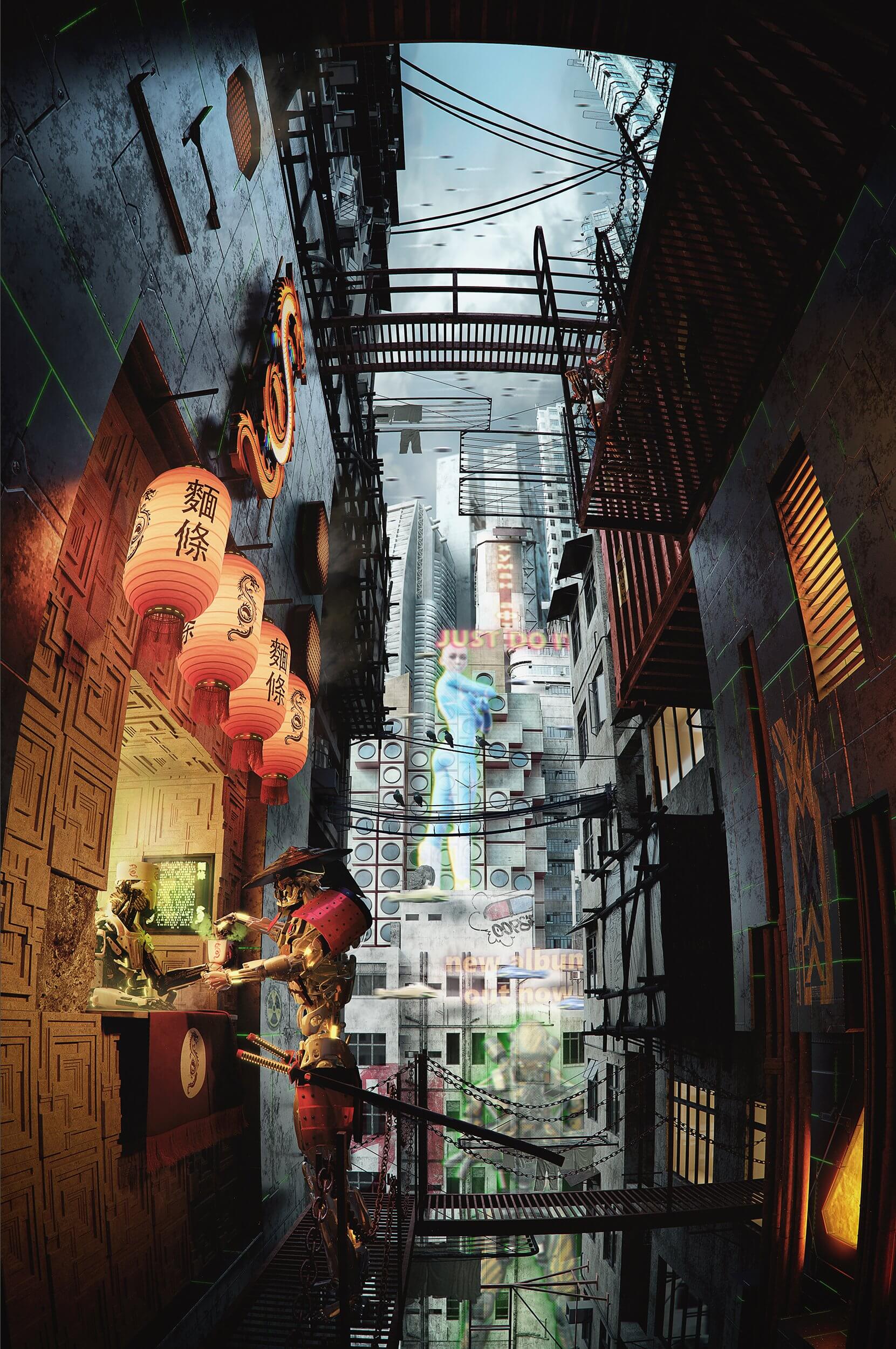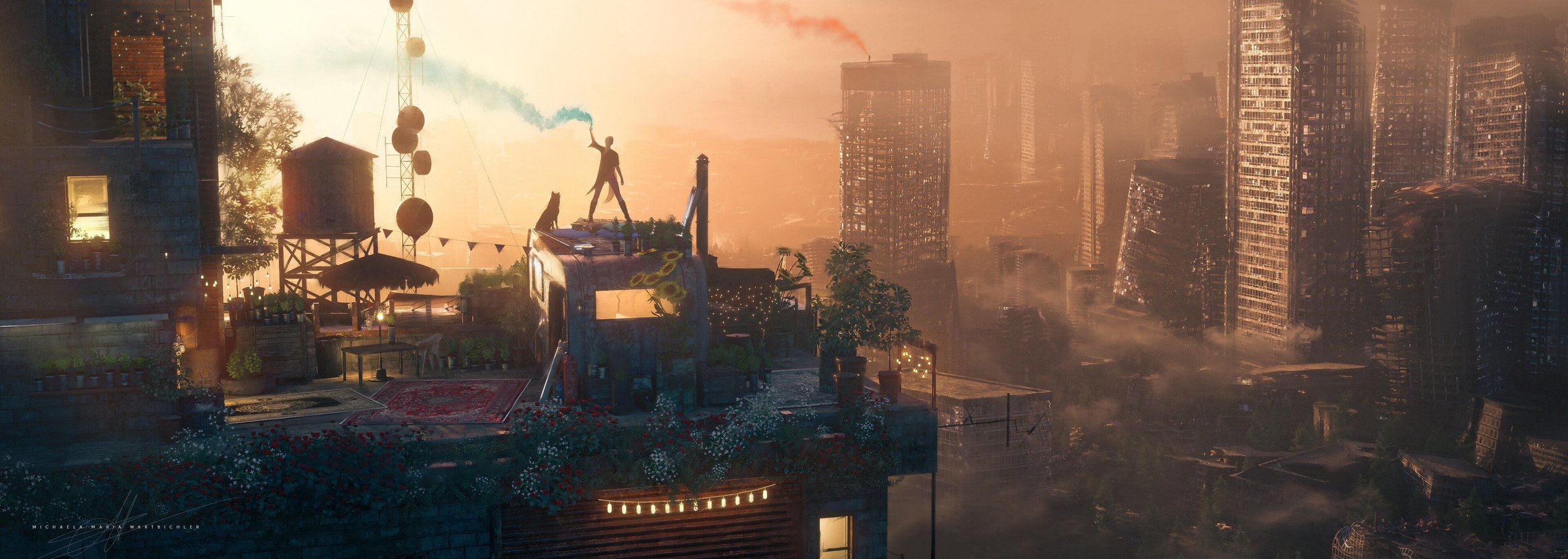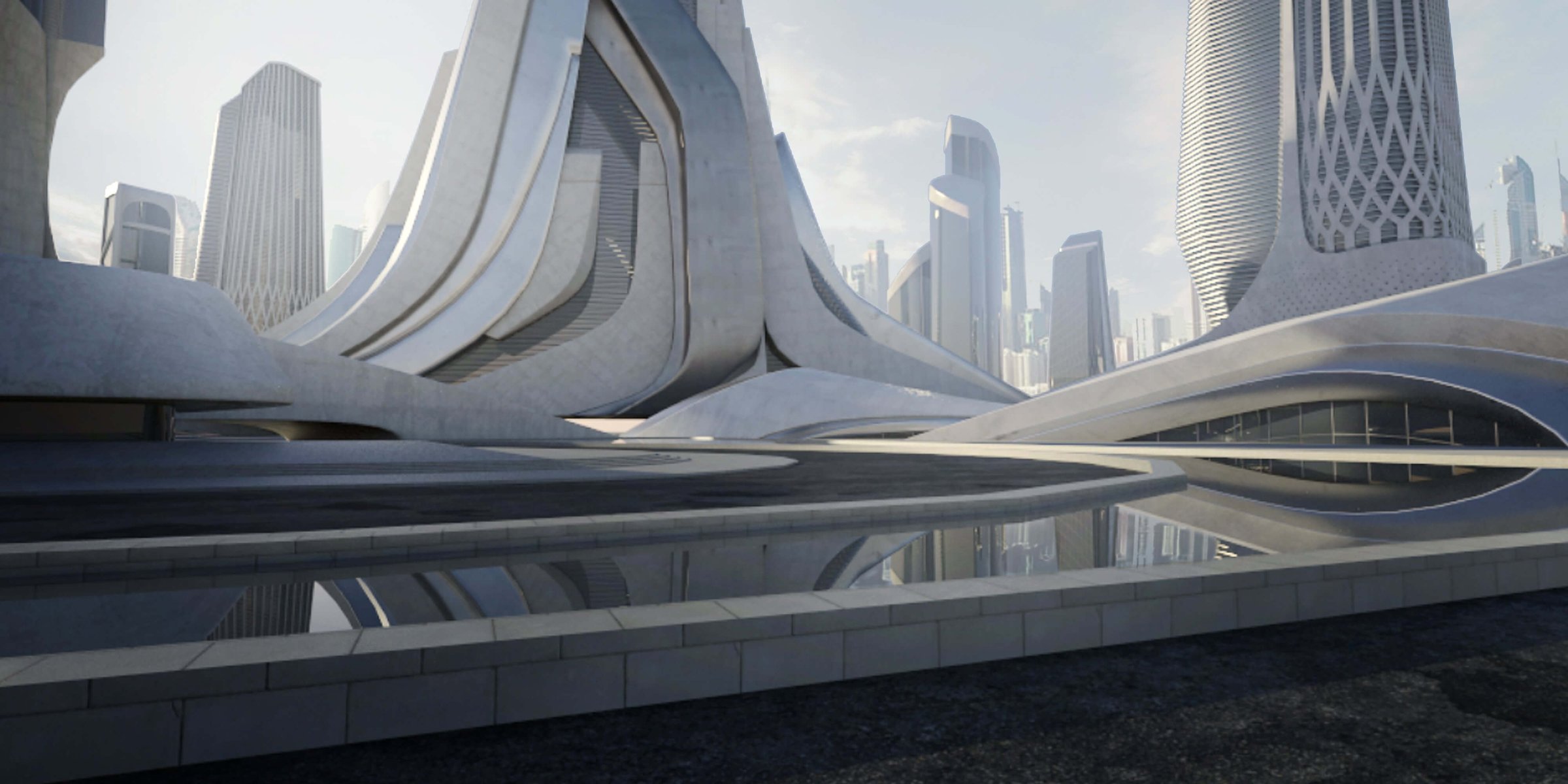
Check out our interview with José Valente, the Concept Winner of the Cyberpunk #KB3DCONTEST back in September 2019. As we get closer to narrowing down the winners for the Post Apocalypse #KB3DCONTEST, you can get a sense of what the KB3D Team looks for when selecting winners and finalists, by reading José's process and approach to his winning piece.
What was the story you chose to tell?
The fast pace of technological breakthroughs we see every single day could be the catalyst to possibly replacing all of humanity. And that was the idea behind this image, to portray a very human and colloquial interaction, like going to your favorite street restaurant, and then removing the human element from it. Even with all the technological advances one witnesses in the image, I wanted to convey a sense of normalcy, some sort of “Life still goes on” even if we are not a part of it anymore.
How did you go about bringing this story to life visually?
I am not very good at freehand drawing, so I always start by taking a bit of time going through different scenarios in my head for the concept I want to portray. Usually, these ideas come to me while doing completely unrelated things. Then I just start collecting as many references I can find that fit my idea, and create a mood board to which I can always refer to during the process.

After settling on an idea, I jump straight into Cinema4D and start blocking out my scene. Very rough at the beginning, just placing cubes as buildings or main objects stand-ins to create my composition. In this case, I knew I wanted to be inside of a small alley looking towards a bigger and open city in the back. Here I was already playing with light as well because it was such an important player to emphasize the different parts of the image.

Then I just start replacing cubes for buildings (which is amazingly fast with the KitBash assets) and start refining the materials on the scene. I have also kept the foreground as my playing field so that I could be more free to model what I had in mind, like the little restaurant and the suspended catwalks between the buildings.

I like to have the best and most complete 3d base I can, so that I can go to Photoshop afterward and paint all the details that bring life to the picture. You can see this process on the gif.

The render was done with Cinema4D and Corona and Photoshop for post-production. All in all, it took me around two weeks, working every now and then at nights and weekends.
Thanks for taking us through your process. How long have you been an artist?
Movies and comics have always played a huge role in my life since childhood. And they were the factor that led me to search for an artistic endeavor.
As for my professional career, I started as an architect before focusing on Architectural visualization, and I have worked as a visualizer for the last 10 years. As for the free time that I don't spend with my family, I spend it doing personal projects like KitBash competitions.

We are lucky to have you! Finally, what does art mean to you in both a personal context and the larger societal one?
I think that for everybody, art is a way of expressing oneself always associated with a specific Zeitgeist. Being able to share visually with other people what goes through one's mind, that is complete freedom I guess.
---

José Valente has been working in Arch-viz for the past 10 years while living in Spain and Germany.
Make sure to check out his ArtStation





